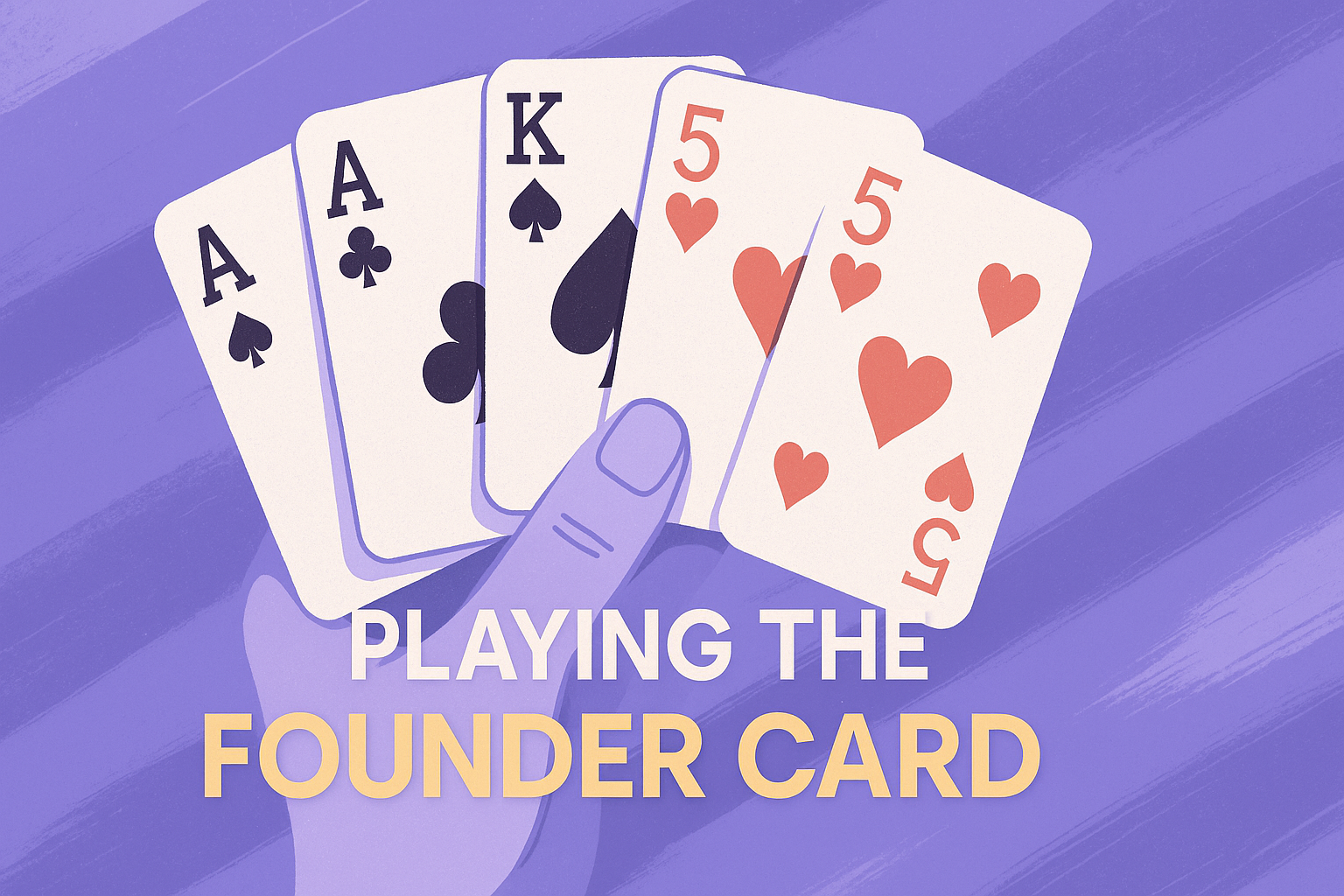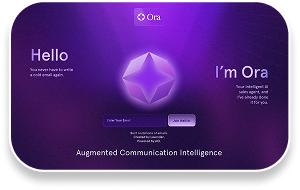The “Founder Card”: A Cold Email Play That Works in Any Market
Seeking feedback isn't just for founders. This cold email framework will rewire how you write cold emails and templates.

Most cold email advice focuses on what to say.
But often, the real difference-maker is how a seller shows up.
When outbound efforts start to stall — whether bringing a new product to market, targeting a new persona, expanding into a new geography, or just struggling to get replies — there’s a simple mindset shift that resets the tone of outreach.
It’s called the Founder Card.
A total pattern interrupt that works for any seller, in any market maturity.
What Is the Founder Card?
The Founder Card flips the normal dynamic of cold email outreach.
Instead of posturing or pitching, the seller shows up like a founder — transparent, curious, and human.
Rather than pretending to have all the answers, the message invites the recipient into the problem. It signals collaboration instead of conversion.
Founders don’t sell like reps.
They involve people in shaping solutions, creating a sense of shared ownership from the start.
That mindset — curiosity over confidence — is what makes this approach so effective in cold email.
Example #1: Feedback from a Different Persona
Imagine a rep who normally sells to sales leaders but spots an opportunity to help customer success (CS) teams as well.
Instead of forcing a confident pitch into an untested market, they send something like this:
Subject: Feedback: CS Idea
Hey Will, given your history leading CS teams at ___, ___, and now ___ — you seemed like the perfect person to give some feedback here.
Normally I’d reach out to sales leaders about our outbound agent Ora.
But... our team was talking yesterday. Our agent’s constant research could give CSMs more timely outbound — better than the standard “checking in... wanna do a QBR and renew?”
We’re probably missing some things. Down to give some feedback?
Happy to follow up with more specifics if helpful.
This message doesn’t try to sell.
It invites the reader to think with the sender — creating a collaborative dynamic from the first touch.
That’s the essence of the Founder Card.
It replaces pressure with partnership.
Why It Works (and Why It’s Great for Cold Email)
This approach consistently outperforms generic cold email templates because it breaks patterns and builds trust fast.
- It interrupts the pattern.
Most inboxes are filled with confident pitches. A feedback request stands out. - It lowers defenses.
Transparency removes the pressure of a sales conversation and makes engagement feel safer. - It creates investment.
People like giving feedback — and once they do, they feel subtly connected to the product or idea. - It reframes the relationship.
The sender no longer feels like a rep chasing a meeting, but a peer exploring a shared problem.
Example #2: The “Help Me Think” Message
The Founder Card also works when existing cold email campaigns aren’t getting traction — even with a familiar audience.
Subject: Feedback
Hey Will, hoping you can help me out here. Saw you spent some time in sales, so thought you'd have some ideas.
We’re reaching out to CS leaders about our AI Agent. Haven’t gotten many hits despite the effort to personalize.
Our belief is CS leaders are fighting for renewals right now. One of the simplest ways to win more renewals is to get/keep {their persona} engaged with their CSM.
Maybe the messaging is off... but is that actually a “hair on fire” problem?
Context: Our agent surfaces new data at their company and in their market. It then tees up killer emails for CSMs to remind customers where their product can help.
Curious if this thinking misses the mark.
It’s still personal. Still clear on the problem being solved.
But it shifts from pitching to thinking out loud — a small change that can open big doors.
How to Use It in Cold Email Strategy
A few guidelines for running the Founder Card play effectively:
- Be specific about the feedback.
Clear, focused questions invite real responses. - Keep the tone grounded.
Authentic curiosity outperforms performative humility every time. - Follow up thoughtfully.
When someone engages, don’t pivot into a hard pitch. Stay in founder mode — conversational, thoughtful, and collaborative.
The Takeaway
When cold email outreach stops landing, most sellers double down on personalization or volume.
Instead, consider leading with transparency.
Ask for feedback. Invite conversation. Build connection through curiosity.
Because sometimes, the best way to win replies… is to stop trying so hard to sell.







_V1%20(1).png)